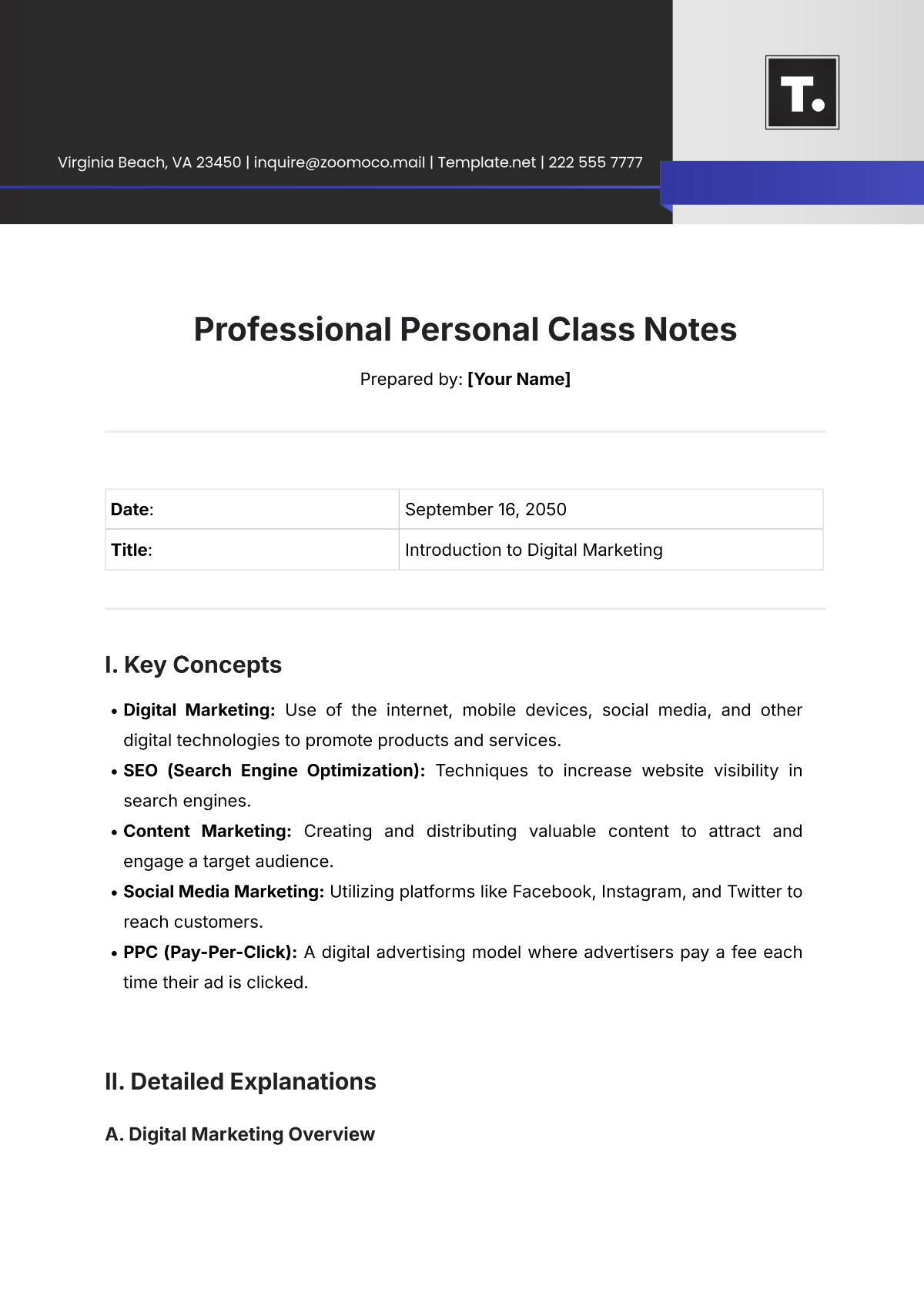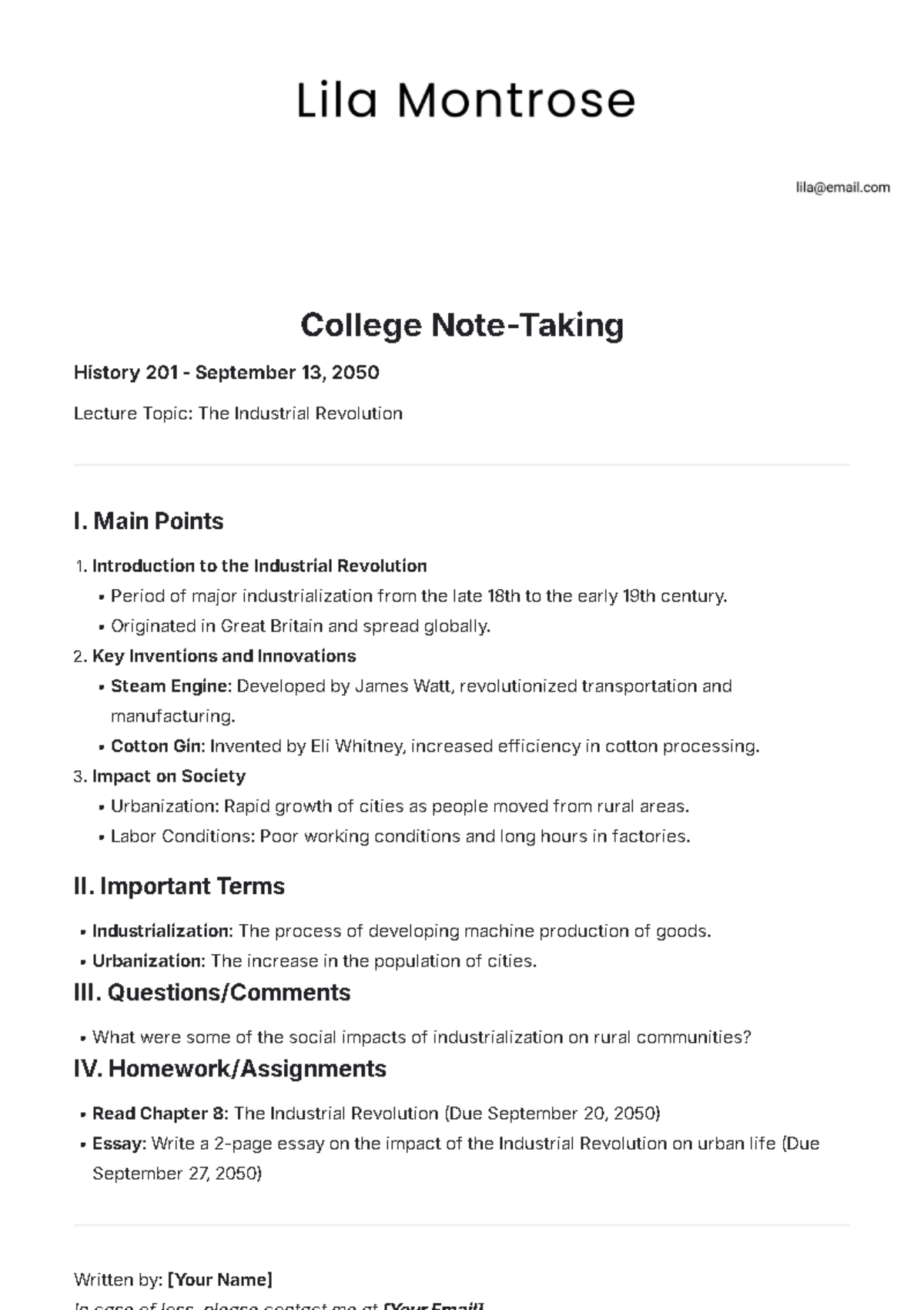Field Notes Qualitative Research
Date: | [Date] |
Time: | 9:00 AM - 11:30 AM |
Location: | Greenfield Farmers' Market, Downtown Greenfield |
Researcher: | [Your Name] |
I. Context/Setting
I.I Description of the Setting
The Greenfield Farmers' Market is located in the heart of downtown, set up in a large open square surrounded by local shops and cafes. The market consists of various stalls offering fresh produce, handmade crafts, and artisanal goods. The atmosphere is lively, with the sounds of vendors calling out to customers, children playing, and street musicians performing in the background. The weather is clear and warm, contributing to the market's bustling energy.
I.II Background Information
The market operates every Saturday morning and is a significant event for the community, attracting a diverse mix of residents and tourists. The market is known for its emphasis on locally sourced and organic products, drawing vendors from the surrounding rural areas. This observation focuses on the interactions between vendors and customers, aiming to understand the social dynamics and community bonds formed within this space.
II. Participants
II.I Description of Participants
The participants observed include a mix of local farmers, artisans, and customers. The farmers and artisans range in age from their mid-20s to late 60s, with a majority being middle-aged. The customers are a diverse group, including young families, elderly couples, and individuals of various ethnic backgrounds. Notable participants include:
A middle-aged woman (Vendor A) selling organic vegetables, is particularly engaging with customers, offering cooking tips and recipe suggestions.
A young couple (Customer A and B) browsing handmade jewelry, appearing indecisive and frequently consulting each other before making purchases.
II.II Roles and Relationships
The vendors often assume the role of both seller and community liaison, offering more than just products but also advice, stories, and local news. The relationships among vendors appear collegial, with friendly exchanges and mutual support observed throughout the market. The customers often approach vendors with a sense of familiarity, suggesting ongoing relationships built over repeated visits.
III. Activities and Interactions
III.I Description of Activities
Activity | Description | Participants Involved | Notes |
|---|---|---|---|
Buying and Selling | The core activity involves vendors selling goods to customers. | All vendors and customers | Transactions occur throughout the market. |
Vendor Engagement | Vendor A actively engages customers in conversation, asking about their families and discussing organic farming benefits. | Vendor A and various customers | Builds rapport and educates customers on products. |
Customer Decision-Making | Customers A and B move slowly from stall to stall, discussing potential purchases in hushed tones and seeking vendor advice. | Customers A and B, various vendors | Customers deliberate carefully before making purchases. |
III.II Sequence of Events
Time | Event |
|---|---|
9:30 AM | The market starts to get crowded, with a steady influx of customers. |
10:00 AM | A live band begins playing near the center of the market, drawing attention and causing a shift in foot traffic. |
10:45 AM | Vendor A is observed packing up some of her stock, indicating the end of her supply. Customer A and B make their first purchase of the day at a jewelry stall. |
11:15 AM | The market begins to thin out, with vendors starting to close down their stalls. |
IV. Direct Observations
IV.I Detailed Observations
Aspect | Vendor A | Customer A and B |
|---|---|---|
General Behavior | The stall is busy with a constant flow of customers. Vendor A engages actively with everyone who approaches. | Customer A and B are more reserved and take their time at each stall. |
Body Language | Maintains eye contact, smiles frequently, and uses open body language. | Often whisper to each other, maintain close physical proximity, and use minimal gestures. |
Interaction Style | Conversations are personalized. Vendor A asks about customers' preferences, dietary needs, and gardening experiences. | Ask specific questions about the origin and quality of the products. |
Customer Engagement | Creates a personalized shopping experience that fosters a sense of connection and loyalty. | Exhibits a cautious approach, possibly due to budget constraints or a desire for informed decisions. |
Transactional Approach | Not strictly transactional; focuses on building rapport and offering advice beyond the sale. | More focused on gathering detailed information before making a purchase decision. |
IV.II Nonverbal Cues
Vendor A:
Frequently gestures towards her produce, inviting customers to touch and smell the vegetables.
Often nods while listening, which encourages customers to share more.
Customer A and B:
Maintain close physical proximity to each other, indicating a strong partnership in their decision-making process.
Often point at items while discussing, indicating interest or preference.
V. Reflections/Interpretations
V.I Personal Reflections
The vibrant atmosphere of the market seems to play a significant role in shaping interactions. As an observer, I found myself feeling a sense of community and connection, influenced by the positive energy and the visible bonds between vendors and customers. I also noticed my assumptions about the demographics of the market being challenged; the diversity of participants was greater than I anticipated.
V.II Initial Interpretations
The interactions at Vendor A's stall suggest that the vendor-customer relationship goes beyond simple transactions; it is about building trust and a sense of belonging within the community. Vendor A's approach to engaging customers on a personal level appears to foster customer loyalty and repeat business. In contrast, Customer A and B's cautious approach might indicate a need for more information and reassurance before committing to a purchase, highlighting the importance of vendor transparency and product knowledge.
VI. Emerging Themes
VI.I Preliminary Themes
Several themes are emerging from the observations:
Community Building: The market serves as a space for strengthening community ties, where vendors and customers interact beyond the transactional level.
Trust and Loyalty: Trust is a key factor in customer retention, built through personalized interactions and transparency.
Diversity of Interactions: There is a wide range of interaction styles, from the outgoing and personable approach of Vendor A to the cautious and deliberate behavior of Customers A and B.
VI.II Connections to Research Questions
These themes suggest that farmers' markets are not just economic spaces but also social hubs where community relationships are cultivated. This supports the research question on how community interactions at local markets contribute to social cohesion.
VII. Follow-Up Questions/Next Steps
VII.I Questions for Further Investigation
How do different vendors' interaction styles impact customer satisfaction and purchasing decisions?
What role does the market's atmosphere play in shaping social interactions and community bonds?
Are there differences in interaction patterns based on the type of products sold (e.g., food vs. crafts)?
VII.II Plans for Future Observations
In the next observation, I plan to focus on vendors selling non-food items, such as crafts and clothing, to see if the same community-building dynamics are present. I will also consider interviewing a few vendors and customers to gain deeper insights into their perspectives on the market's role in the community.
VIII. Additional Notes
VIII.I Miscellaneous Observations
I noticed that some vendors who were less interactive with customers seemed to have fewer sales, which could suggest the importance of social engagement in this setting. The presence of live music also seemed to enhance the overall market experience, creating a more relaxed and enjoyable atmosphere for both vendors and customers.
VIII.II Challenges/Limitations
The main challenge during this observation was the difficulty in capturing all interactions due to the market's size and the number of participants. Additionally, as an outsider, there is a possibility that some behaviors were altered due to my presence, a common limitation in qualitative research.
These detailed and suggestive field notes provide a comprehensive view of the observations, reflections, and emerging insights from your qualitative research, guiding future research efforts.

















































